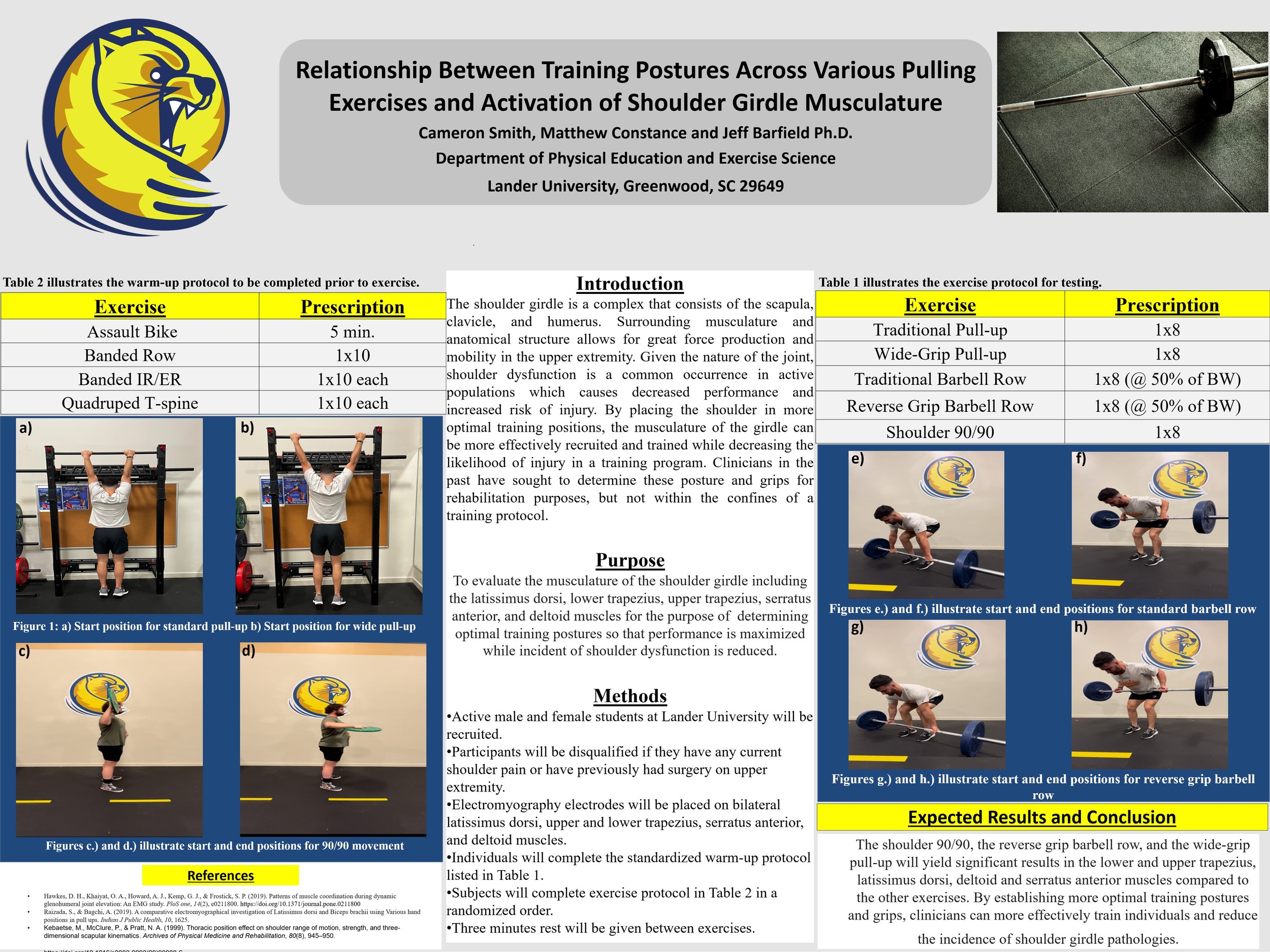Relationship Between Training Postures Across Various Pulling Exercises and Activation of Shoulder Girdle Musculature
Cameron Smith, Mattie Constance, Jeff Barfield
In active populations, shoulder dysfunction is a common occurrence which disrupts the ability of the shoulder girdle and results in decreased performance and greater risk of injury. The shoulder girdle is a complex composed of the humerus, scapula, and clavicle. Musculature within the complex yields large force production that allows for great mobility of the upper extremity. Past studies have utilized electromyography to record muscle activity around the shoulder girdle at differing postures and grips to determine which yields the greatest activation for certain muscles while taking the strain off others. Filtered selection of given postures can be applied to workload management for overhead athletes and weight training for athletes where the shoulder is a dominant joint used. Therefore, the purpose of this study was to evaluate muscle activity of the latissimus dorsi, lower trapezius, upper trapezius, serratus anterior, and deltoid muscles across multiple exercises for the purpose of determining optimal training postures for specific shoulder girdle musculature activation. Methods: Participants will consist of active college-aged individuals free of shoulder pain or previous shoulder surgery. Upon written consent, electromyographic electrodes will be placed on bilateral latissimus dorsi, upper and lower trapezius, serratus anterior, and deltoid muscles. Participants will be required to perform the following exercises: traditional grip and a wide grip pull-ups, traditional and reverse grip barbell row, and a 90/90 movement with a 10-pound plate in randomized order. After performing a standardized warm-up, participants will perform 1x8 repetitions for each exercise with 50% body weight utilized for barbell rows. Expected Results and Conclusions: The shoulder 90/90, the reverse grip barbell row, and the wide-grip pull-up will yield significant results in the lower and upper trapezius, latissimus dorsi, deltoid and serratus anterior muscles compared to the other exercises.
Cameron Smith is a Senior Exercise Science major who will be graduating Spring 2023 from Lander University. He was a member of the Men’s Rugby team and a member of Alpha Chi while at Lander. Cameron plans to pursue a CSCS certification upon graduation and do personal training until he goes to PT school.
Matthew Constance is a Junior Exercise science major who will be graduating in Fall 2026 From Lander University. He was the President of Lander Powerlifting Club and a member of Phi Alpha Theta while attending Lander. Matthew Plans to pursue a CSCS certification and purse a career in Strength and Conditioning coaching at the collegiate level.
